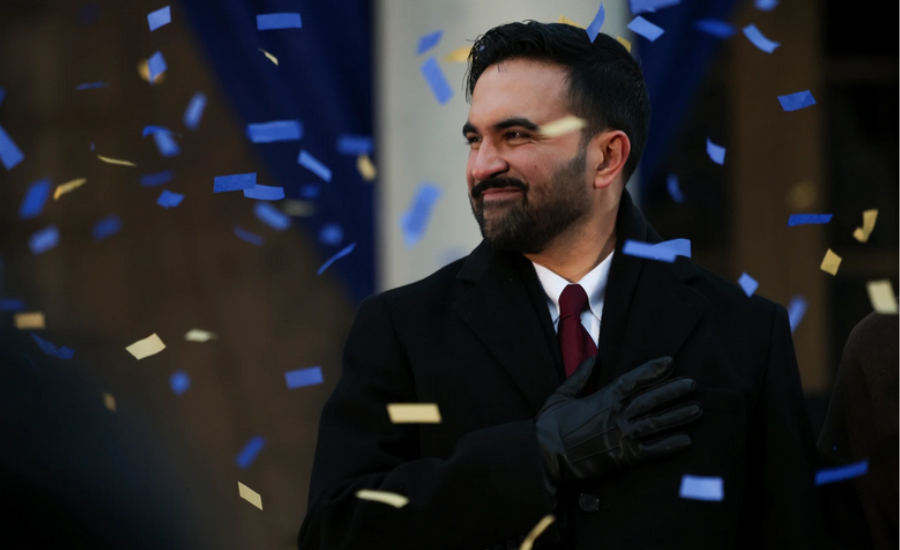'Killers of the Flower Moon': A Five-Star Historical Epic Echoing the Black American Experience
By EEW Entertainment Editors // CineBuzz// Movies
Leonardo DiCaprio and Lily Gladstone in Killers of the Flower Moon.
Paramount Pictures
EEW Rating: 5 Stars
Stream It: Apple TV+
In a cinematic landscape yearning for narratives that echo the contours of our collective history, Martin Scorsese's masterful $200 million epic "Killers of the Flower Moon" emerges as a resounding voice.
This riveting adaptation of David Grann’s 2017 non-fiction book does more than recount a tale of wealth and deceit; it draws poignant parallels to the struggles that define the Black experience in America—particularly resonant with the historical tribulations of "Little Africa" which is briefly highlighted through imagery in the film.
As we unveil the layers of this true crime story set during the Osage Nation's Reign of Terror, we find an unsettling mirror reflecting the systemic racism that has also marred Black American history.
Scorsese on set with the cast, DiCaprio, Gladstone and De Niro. Killers of the Flower Moon
"Killers of the Flower Moon" shines a light on a grievous chapter in the 1920s when the Osage Nation faced a brutal series of at least 60 murders, known as the Reign of Terror. At the heart of the film lies the complex narrative of Ernest Burkhart (played by Leonardo DiCaprio), a World War I veteran, and his marriage to Mollie Burkhart (portrayed by Lily Gladstone), an Osage woman from a prosperous family. The formidable Robert De Niro brings to life Ernest’s uncle, William Hale, whose malevolent schemes to usurp the wealth of the Osage people serve as the story's fulcrum.
The tragedy of the Osage Nation began when they were forcibly relocated from Kansas to Oklahoma by the U.S. government, a move that evokes the displacement of Black communities throughout history. The Osage's prescient decision to purchase their reservation land in Oklahoma, initially deemed worthless by the government, proved to be a game-changer as the land was discovered to hold vast oil reserves.
The New York Times encapsulates their resultant prosperity, noting the Osage's $30 million in oil royalties in 1923, which is akin to approximately $540 million today.
Lily Gladstone (Apple TV+)
Yet, with wealth came wolves in sheep's clothing. William Hale, self-proclaimed "King of the Osage Hills," exemplified the insidious nature of systemic racism by befriending and then betraying the Osage. Through marriages between white individuals and Osage community members, Hale plotted to murder the Osage partners, ensuring the transfer of their "headrights"—the oil royalties—to their white spouses.
This sinister manipulation of marriage and inheritance reflects the broader exploitation and disenfranchisement Black Americans have faced, where institutional barriers were and still are strategically placed to prevent the accumulation and retention of wealth within Black communities. Similarly, the term "headrights" evokes the historical context of "40 acres and a mule," a promise unfulfilled for many freed slaves, highlighting the recurring theme of denied economic autonomy.
From left: JaNae Collins as Reta Smith, Cara Jade Myers as Anna Brown, Lily Gladstone as Mollie Burkhart and Jillion Dion as Minnie Smith (Credit: Screenshot from the trailer of the Apple Original Film, “Killers of the Flower Moon”)
The U.S. government employed ingeniously cruel tactics to deprive the Osage of their rightful oil payments; these included issuing payments in kind, such as food and clothing, rather than cash, or withholding payments altogether by declaring Osage individuals "idle" until they engaged in farming. The government went so far as to question the Osage's ability to manage their finances, forcing them into conservatorships. These guardians, depicted with chilling accuracy in "Killers of the Flower Moon," were often the architects of theft and murder, conspiring to seize Osage land and wealth for themselves.
The film sheds light on these historical injustices, capturing the precarious circumstances thrust upon the Osage by the federal government.
As revealed in Grann’s detailed account, the U.S. government was later compelled to make financial amends, settling for hundreds of millions of dollars due to their grossly unfair practices concerning oil payments. Nevertheless, such compensation came after irreparable harm had been done, serving as a stark reminder that justice delayed is justice denied—a sentiment all too familiar to the Black community, whose own history is rife with similar tales of exploitation and belated reparations.
"Killers of the Flower Moon" does not merely present a historical recount; it is an evocative statement on the pervasive nature of racism and the lengths to which white supremacists will go to maintain control over minority groups. The experiences of the Osage people, as depicted in this film, resonate with Black audiences who recognize the patterns of exploitation and systemic barriers that have consistently undermined the prosperity of communities of color.
"Killers of the Flower Moon" is a cinematic triumph that earns a well-deserved five stars from EEW Magazine Online for its gripping storytelling, superb performances, and its bold confrontation of historical racism.
Scorsese has crafted a film that not only serves as a testament to the Osage Nation's past but also stands as a powerful allegory for the Black American experience. For our Black women audience at EEW Magazine Online, this movie isn't just a historical drama. As we watch this film, we are reminded of the ongoing journey toward justice and equality and of the importance of preserving and sharing our stories.










